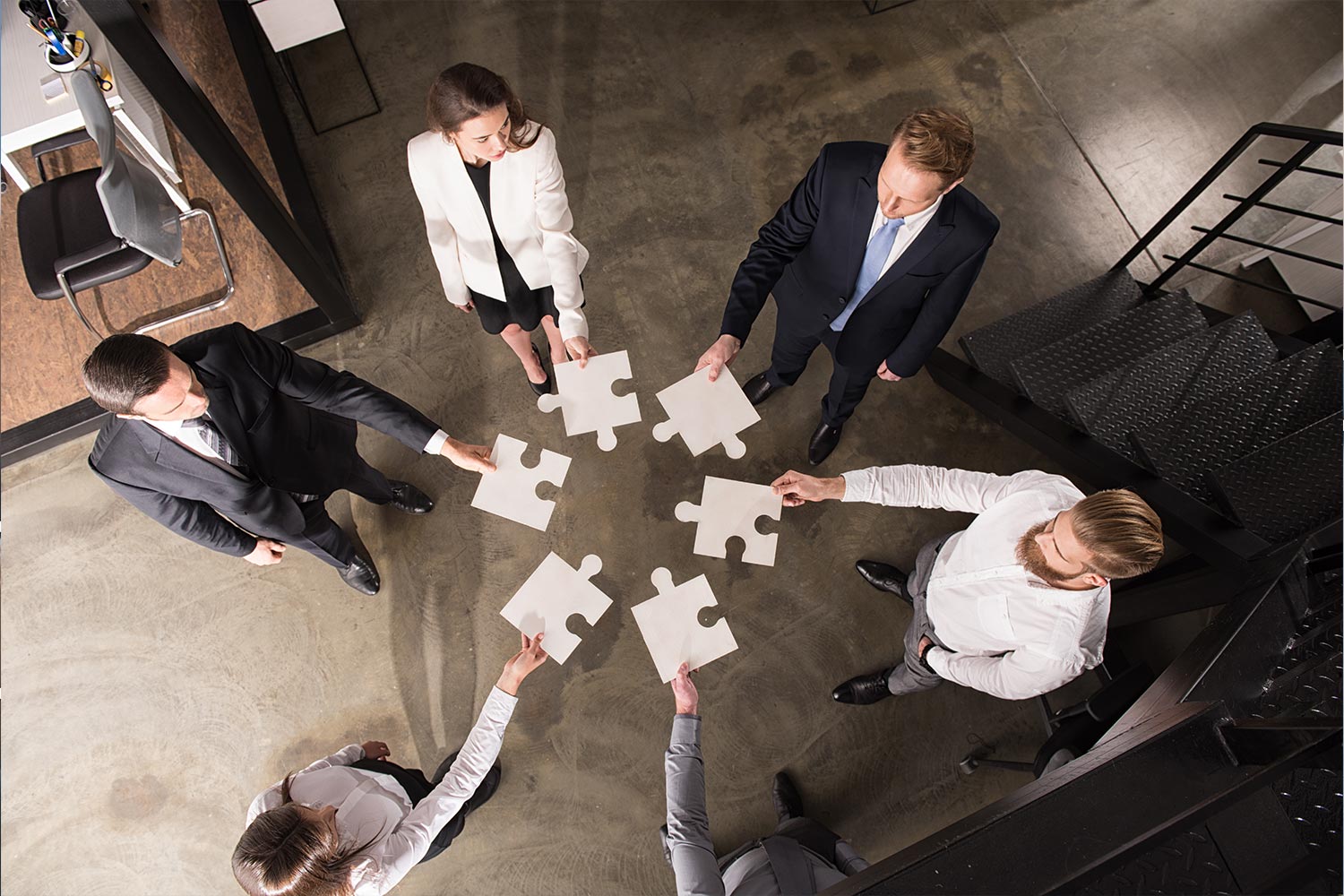Scarcity or Abundance? An Experiment in Collaborative Fundraising
With a scarcity mentality, we are competing for a slice of pie. Collaborating with a mentality that there’s enough to go around, can we grow the pie?

What if embracing abundance instead of scarcity yields both better fundraising results and impact?
As a recovering lawyer, I wasn’t professionally trained in development when I became an executive director three years ago, yet my Board expected me to get to work fundraising…fast.
When I began exploring the field, I quickly learned there are a lot of recognized best practices. One of the most tried and true ground rules to successful fundraising is that resources are limited and nonprofits are plentiful, so keep your strategies and funder contacts close to your chest.
But I soon began to wonder: what if embracing abundance instead of scarcity yields both better fundraising results and impact?
I first began changing my thinking when I attended a two-day summit in San Francisco convened by the Haas Jr. Foundation. The theme: upending the scarcity mentality of nonprofit fundraising and bringing abundance to the culture of philanthropy. The traditional scarcity mentality forces us to believe we are all competing for a slice of a finite pie of funds. But what happens when we replace that model with a mentality that there’s enough to go around, and that when we collaborate, we grow the pie? Based on our discussions there, society will be able to better raise the funds needed for all worthy causes.
Soon after the workshop, I had a chance to test this theory in my organization.
The Situation
San Francisco Baykeeper is a small, local nonprofit organization that has worked tenaciously to stop polluters in San Francisco Bay for three decades. Right now, we’re facing a huge threat to the Bay’s health.
The Phillips 66 oil company wants to more than double the number of tanker ships bringing heavy crude oil to its refinery on the Bay’s eastern shoreline, dramatically increasing the risk of oil spills. Past spills contaminated shorelines, closed beaches, and killed tens of thousands of birds. Baykeeper’s attorneys and scientists have been working in coalition with Stand.earth (a national group) and Communities for a Better Environment (a statewide group) to stop Phillips 66 from expanding.
The Opportunity
The folks at Stand.earth had the wacky idea of doing a joint fundraising event to raise our visibility with some big foundations; specifically to co-sponsor a boat tour of the Bay with representatives from a wish list of funders who might support our work. The refinery is not easy to see from land, but the threat is instantly clear from the water.
Shortly after we agreed to the plan, I was more than a little surprised to receive a spreadsheet complete with all of Stand.earth’s foundation funders and prospects, including contact names and email addresses. They invited us to add our contacts, breaking the time-honored rule of not sharing critical fundraising leads. I admit I hesitated for a moment, but then I decided to jump in with both feet and test out the mentality of abundance.
The Event
On a beautiful sunny day, a dozen representatives from local foundations and staff from each of the three nonprofits gathered at a local marina to board the boat. That’s when we hit a glitch.
Our skipper misread the depth charts, and the boat got stuck in the mud for over an hour until the water rose high enough for the boat to clear the Bay floor and enter the marina. So there we were, with all the foundation representatives waiting while we kept them entertained.
The delay turned out to be an icebreaker. People who already knew each other had time to catch up, and we all had time to mingle. Once the water rose, the boat arrived and we got out on the Bay. Everyone’s attention turned to the shoreline, the water, and fully absorbing a joint presentation that showed why such a beautiful place faced such a great threat. The delay kept us from reaching the refinery as planned, but all of the funders were still moved and inspired by the collaboration and the trip.
The Aftermath
Following the event, the three collaborating organizations created a joint case statement for the funders who attended and asked them to share it with their peers. We showcased the different strengths of our three groups, with Baykeeper focused on protecting the Bay’s water quality and wildlife from a devastating oil spill, Stand.earth committed to stopping fossil fuel transportation nationwide, and Communities for a Better Environment protecting air quality in communities neighboring the refinery. Together we offered funders a wide range of opportunities for support, including investments in the entire joint project, or more restricted funding of the investigation, advocacy, legal, education, and organizing work done by one or all of the partners.
It’s only been a few months, but early results are promising. Our collaboration already jointly received one small grant. In the spirit of even wider collaboration, we are using that new funding to bring indigenous groups to the Bay Area to tell their story, connecting the harm to their families from oil extraction elsewhere in the country to the harm that would be caused to San Francisco Bay and our communities.
Perhaps more importantly, this collaborative fundraising effort opened doors for all of us that could not have otherwise been accessed. Funders have shared their appreciation of us working together to advance a shared objective. I have also personally recommended the work of Stand.earth to two new local funders to support their participation in the partnership. And our organization has been invited to apply for an individual grant from a foundation that didn’t previously support us. As a bonus, fundraising together has strengthened all three organizations’ commitment and efforts to stop the threat of highly toxic tar sands oil and the significant long-term harm it would cause to beautiful San Francisco Bay.
The Takeaway
Many of the principles of fundraising I learned early on really are true: listen to prospective donors to connect them to your cause; build relationships to move supporters to the next level of giving; and thank donors more often than you ask for money. These do result in better fundraising outcomes. But based on my recent experience, I’m wondering if the scarcity-based approach of holding your funding sources under lock and key could use an upgrade.
We all know that funding is the ball bearings of social change, but we should also realize that as mission-based organizations, we owe it to our cause and to the communities we serve to get outside our own silos and actively collaborate with others who share our vision and goals.
When we start to look beyond the money we’ve raised to what impact our efforts create in the world, we may start to recognize that when we approach fundraising from scarcity, we actually limit what’s possible, not only for our organization, but also for the change we seek to create in the world.
So… how might you put collaborative fundraising to work for your organization?
You might also like:
- Re-Imagining Fundraising: How Funder Education and Systemic-Change Approaches are Changing the Game
- The Million-Dollar Question: What Could Your Nonprofit Do if Money Weren’t an Issue?
- The Ultimate Guide to Nonprofit Fundraising in 2025
- The Best Route to Approaching Donors: Hand-Head-Heart
- Your Nonprofit Got its Grant. Now What?
You made it to the end! Please share this article!
Let’s help other nonprofit leaders succeed! Consider sharing this article with your friends and colleagues via email or social media.
About the Author
Sejal Choksi-Chugh became the Executive Director of San Francisco Baykeeper in 2016. For 29 years, Baykeeper has protected San Francisco Bay using science, advocacy, law, and a boat to stop polluters and other threats. Sejal joined the Baykeeper team in 2002 as a lawyer spearheading the charge to reduce agricultural pollution, industrial runoff, sewage overflows, mercury contamination, and oil spills in the Bay. She holds a J.D. with a specialization in Environmental Law from the University of California at Berkeley and a B.S. in Anthropology and Human Biology from Emory University.
Articles on Blue Avocado do not provide legal representation or legal advice and should not be used as a substitute for advice or legal counsel. Blue Avocado provides space for the nonprofit sector to express new ideas. The opinions and views expressed in this article are solely those of the authors. They do not purport to reflect or imply the opinions or views of Blue Avocado, its publisher, or affiliated organizations. Blue Avocado, its publisher, and affiliated organizations are not liable for website visitors’ use of the content on Blue Avocado nor for visitors’ decisions about using the Blue Avocado website.








Sejal Choksi-Chugh, thank you for this great article. It is a great example of when nonprofit collaboration is larger than the sum of its parts.
Any updates from this group? LOVE the concept of abundance over scarcity. THANK YOU!